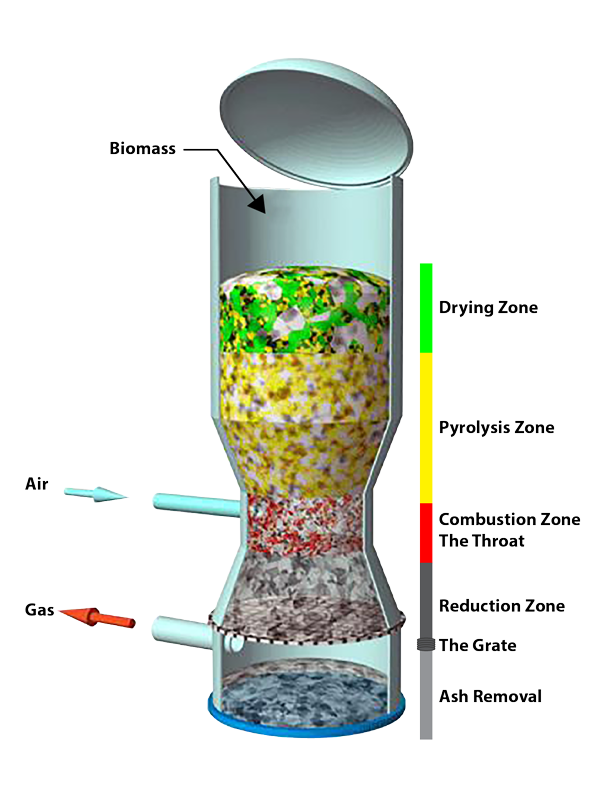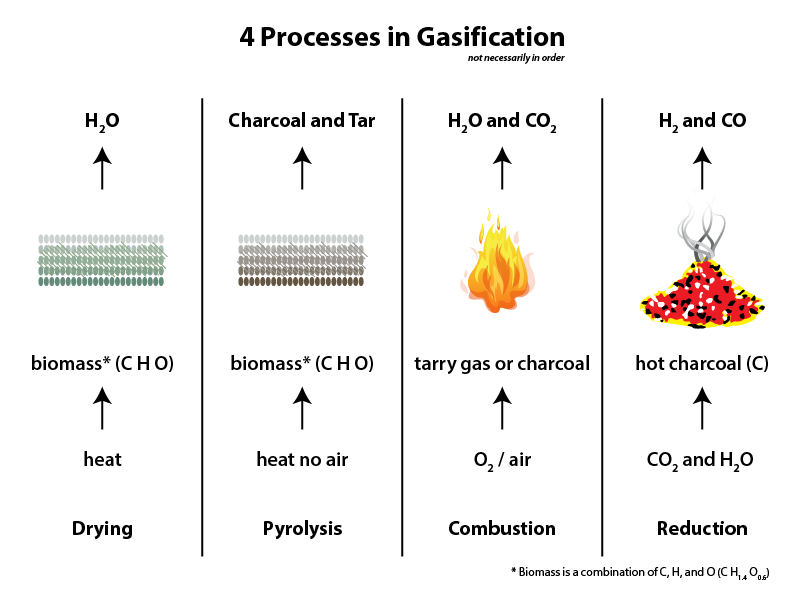Gasification is conversion of solid Hydrocarboneous fuels (wood/ wood-waste, agricultural residues, chicken manure, coal, Municipal Waste etc.) into a combustible gas mixture called Producer Gas/ Syn Gas. The Gasifier is essentially a chemical reactor where various physical and chemical processes take place and break the solid fuel down into Producer Gases. Four distinct processes take place in a gasifier:
1. Drying of the fuel The moisture in the feed comes out in this zone in the form of water vapor. Drying takes place in the upper most portion of the Gasifier, through heat transferred from the high temperature combustion zone.
2. Pyrolysis This is chemical decomposition of organic materials by heating in absence of oxygen at temperatures above 200 degrees C. During pyrolysis, volatiles are released (in the form of gas) and char is produced.
3. Combustion This is where controlled oxygen is given to the fuel and oxidation/ burning occurs. Heat and energy are released.
4. Reduction The combustion products mainly CO2 (Carbon-di-Oxide) and H2O (water vapor) get reduced in the prensence of high temperature carbon to finally give CO (Carbon-mono-oxide) and H2 (Hydrogen).
Gasification is conversion of solid Hydrocarboneous fuels (wood/ wood-waste, agricultural residues, chicken manure, coal, Municipal Waste etc.) into a combustible gas mixture called Producer Gas/ Syn Gas. The Gasifier is essentially a chemical reactor where various physical and chemical processes take place and break the solid fuel down into Producer Gases. Four distinct processes take place in a gasifier:
1. Drying of the fuel The moisture in the feed comes out in this zone in the form of water vapor. Drying takes place in the upper most portion of the Gasifier, through heat transferred from the high temperature combustion zone.
2. Pyrolysis This is chemical decomposition of organic materials by heating in absence of oxygen at temperatures above 200 degrees C. During pyrolysis, volatiles are released (in the form of gas) and char is produced.
3. Combustion This is where controlled oxygen is given to the fuel and oxidation/ burning occurs. Heat and energy are released.
4. Reduction The combustion products mainly CO2 (Carbon-di-Oxide) and H2O (water vapor) get reduced in the prensence of high temperature carbon to finally give CO (Carbon-mono-oxide) and H2 (Hydrogen).


